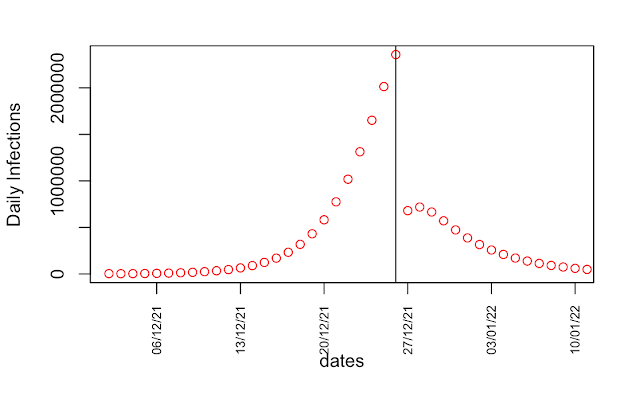It occurred to me that the talk of perhaps bringing in restrictions some time in the future was probably poorly timed, in that we are probably pretty close to the peak right now and if action is going to be worthwhile, it needs to be pretty much immediate. Having made a few comments to that end on twitter, I thought I should check out my intuition with some calculations. So here they are.
My starting point is that the Omicron variant represented 22% of tests on the 11th Dec (link) and we had about 40k positive tests on that day (link - but see additional note at bottom of post) meaning 9k tested cases which I will assume represents 18k real infections (ie 50% of infections are actually observed) and furthermore I'll assume that these infections happened on the 8th as it must take a little while to feel ill and get tested.
I'm using a doubling time of about 2 days with an underlying R0 number of 6, and another assumption I'm making is that the population is about 50% immune. I'm ignoring the Delta infection which is small in comparison and carries on largely in parallel with Omicron.
So I initialise the model to hit 18k infections on the 8th, and ran it forwards. This is what I get with no action at all, just the natural infection profile of an uncontrolled epidemic:


